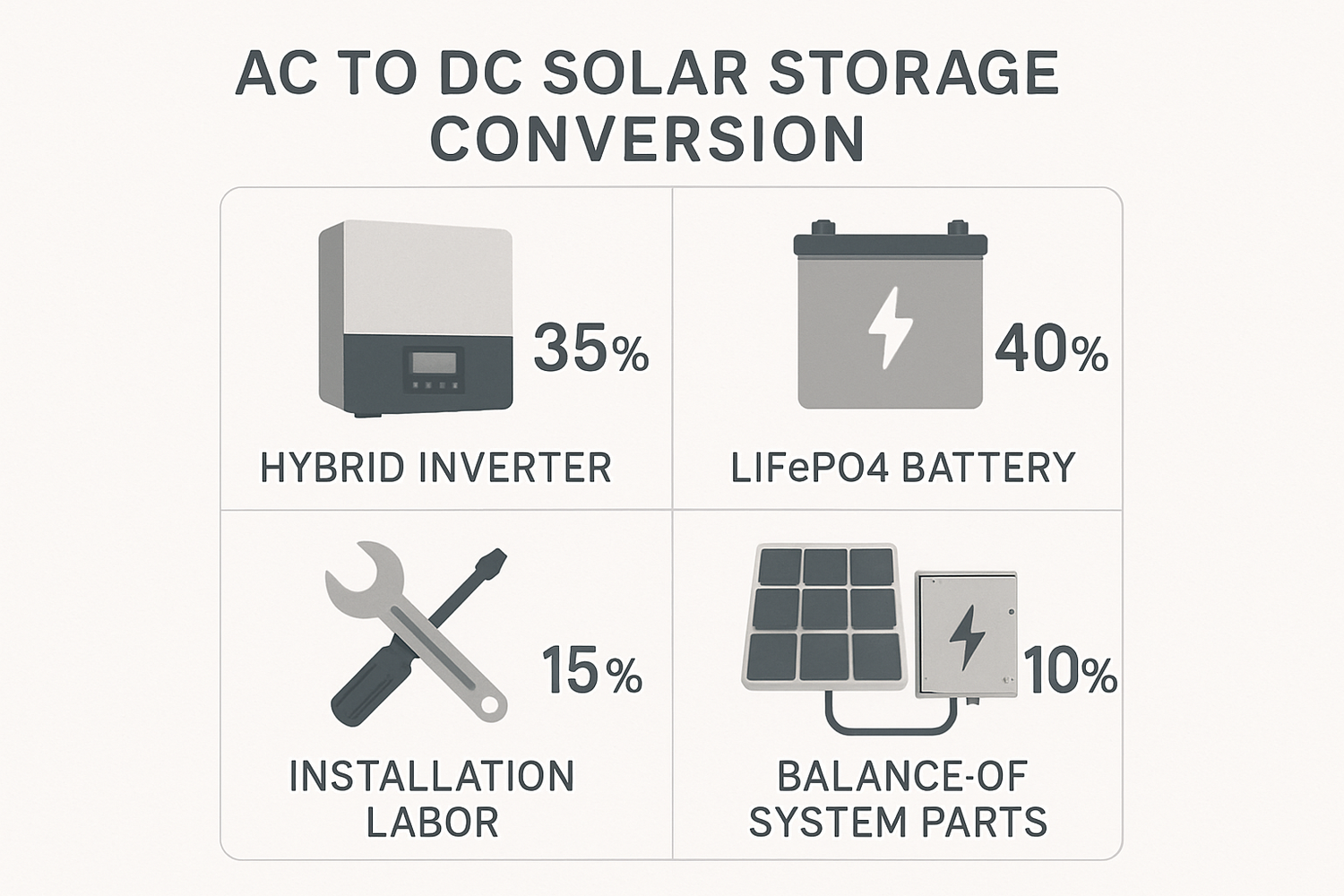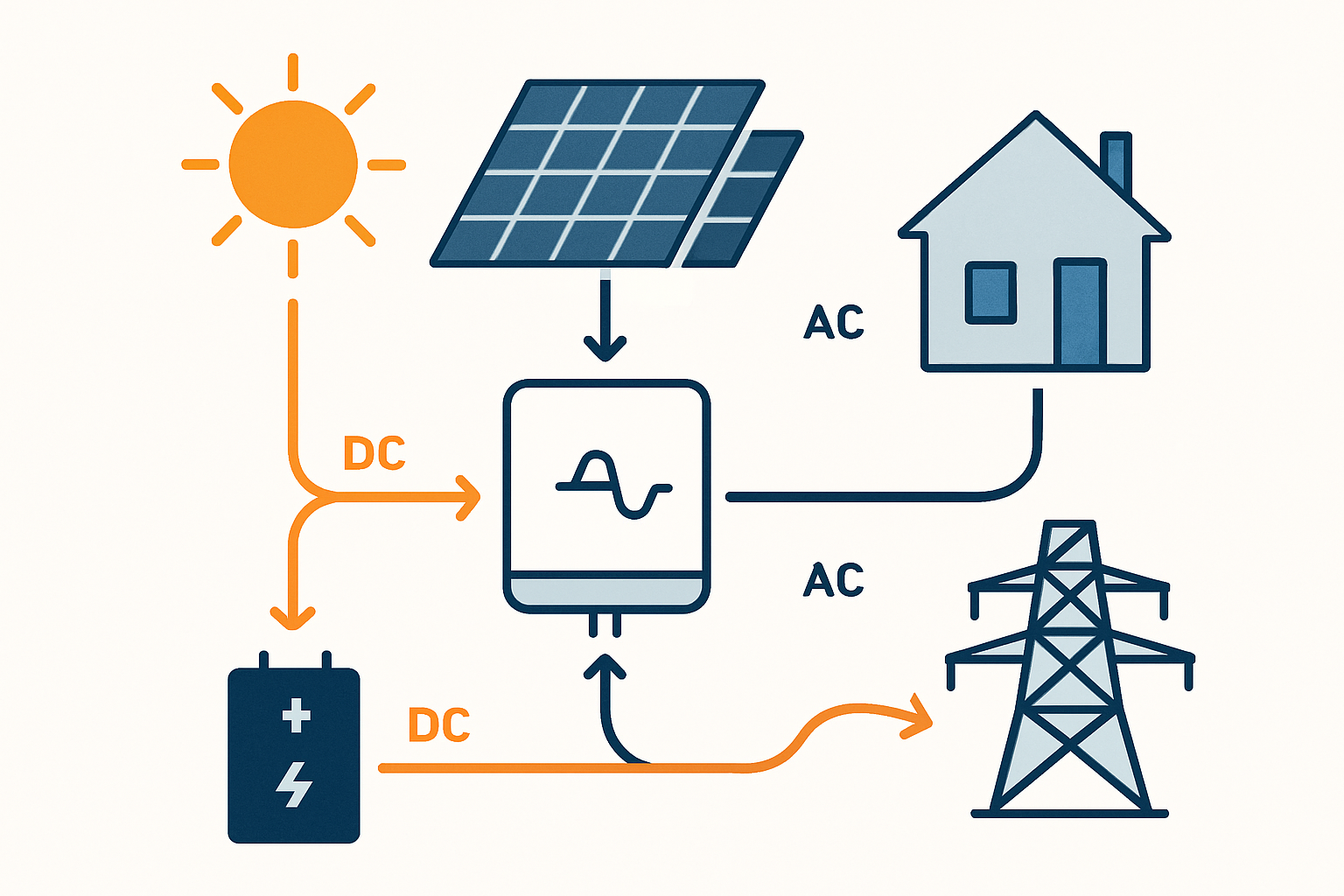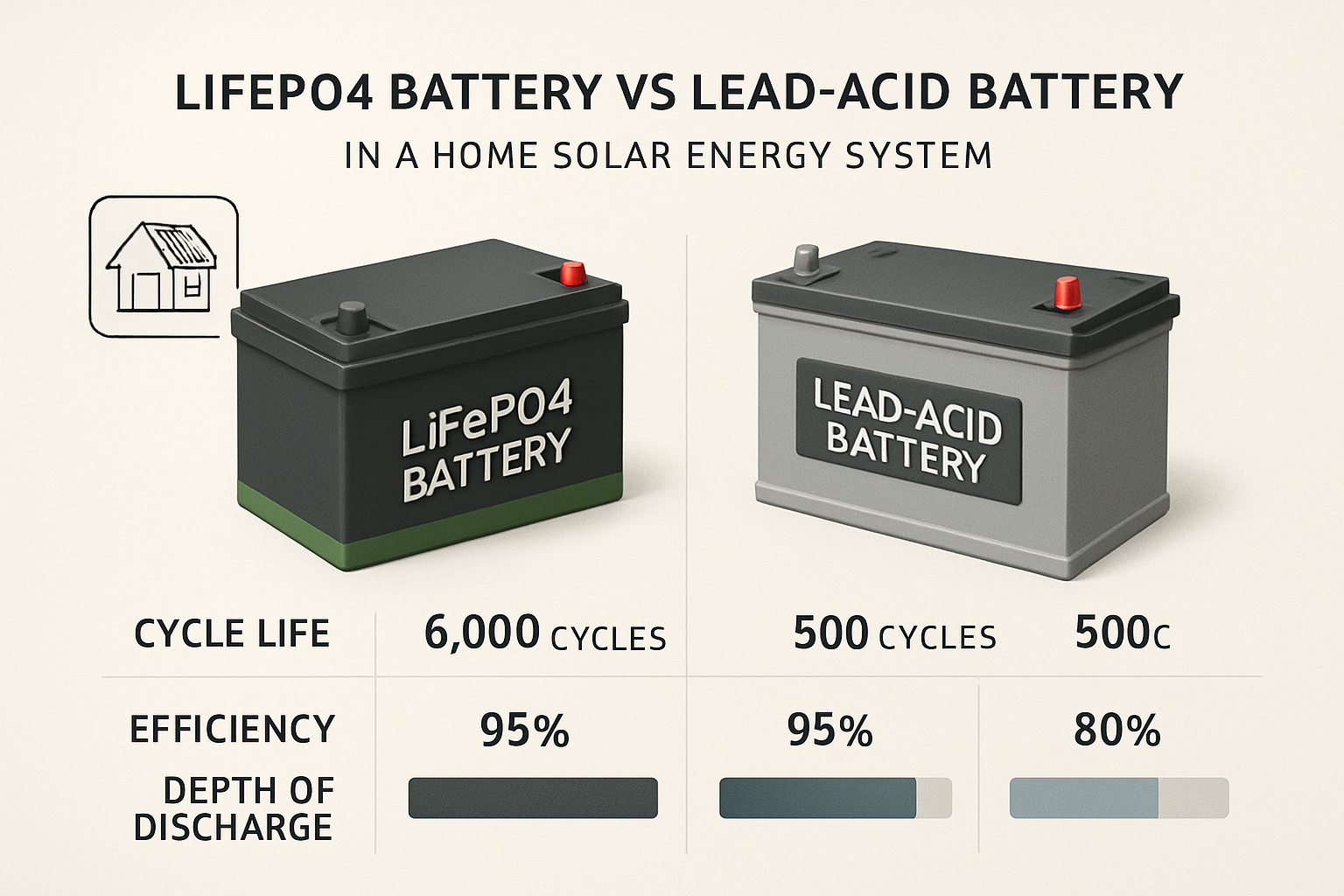Adding a battery to an existing solar panel system is a powerful step toward energy independence. This process often involves an AC to DC conversion for the energy storage system, allowing you to store excess solar energy for use at night or during an outage. Understanding the complete financial picture is critical before committing to this upgrade. This analysis provides a transparent breakdown of the costs involved, helping you make a strategic and informed decision.
Core Components and Their Costs
The total price of an AC to DC solar storage conversion is primarily driven by three categories of hardware: the inverter, the batteries, and the supporting components. Each plays a distinct role and comes with its own price considerations.
The Hybrid Inverter: The Heart of the Conversion
A hybrid inverter is the central component that manages the flow of electricity between your solar panels, battery, home, and the grid. It intelligently converts DC power from the batteries into AC power for your appliances and vice versa. For residential systems, the cost of a hybrid solar inverter typically ranges from $1,500 to $5,000. The final price depends on its power rating (measured in kilowatts), brand reputation, and included features like monitoring software.
Lithium-Ion Batteries: The Energy Reservoir
The battery pack is the single most significant expense, often representing 50% to 70% of the total project cost. Lithium Iron Phosphate (LiFePO4) batteries are the preferred choice for home energy storage due to their superior safety, long cycle life, and high efficiency. The cost is measured per kilowatt-hour (kWh) of capacity. In 2025, the average cost for a lithium-ion battery pack is around $130 to $160 per kWh. Therefore, a standard 10 kWh battery, suitable for most homes, would have a hardware cost between $6,000 and $12,000. While the upfront investment is substantial, the long-term value is clear when considering lifespan.
| Battery Technology | Average Upfront Cost (10 kWh) | Typical Cycle Life | Long-Term Value |
|---|---|---|---|
| LiFePO4 (Lithium Iron Phosphate) | $7,000 - $10,000 | 6,000+ Cycles | Excellent, due to longevity and minimal maintenance. |
| NMC (Nickel Manganese Cobalt) | $8,000 - $12,000 | 2,000 - 4,000 Cycles | Good, but shorter lifespan than LiFePO4. |
| Lead-Acid | $3,000 - $5,000 | 500 - 1,000 Cycles | Low, requires frequent replacement and maintenance. |
Balance of System (BOS) Components
Beyond the main hardware, a collection of smaller parts is necessary to complete the installation safely and effectively. This 'Balance of System' includes wiring, fuses, circuit breakers, mounting racks, and a monitoring system. Collectively, these components can add between $500 and $2,000 to the total cost, depending on the complexity and scale of the project.
Installation and Labor: The Human Element
Hardware costs are only part of the equation. Professional installation is crucial for safety, performance, and compliance with local regulations. These service-related costs can vary significantly by region.
Professional Installation Costs
Hiring a certified electrician or a specialized solar installer is essential. Labor costs for a battery storage addition typically range from $1,000 to $3,000. This fee covers mounting the equipment, running conduit, making all the necessary electrical connections, and commissioning the system. A more complex installation, such as one requiring an electrical panel upgrade, could increase this cost.
Permitting and Inspection Fees
Before work can begin, most municipalities require a permit for installing an energy storage system. After installation, a final inspection is needed to ensure everything is up to code. These administrative fees generally fall between $250 and $750, depending on your local jurisdiction's requirements.
Long-Term Financial Considerations
The true value of an AC to DC energy storage system emerges over its lifetime. Financial incentives can reduce the initial burden, while long-term savings contribute to a favorable return on investment.
Calculating the Return on Investment (ROI)
The ROI for a battery storage system is driven by several factors. The most direct benefit is savings on your electricity bill by using stored solar energy instead of grid power. In areas with time-of-use (TOU) rates, you can store energy when it's cheap and use it during expensive peak hours. The payback period often ranges from 8 to 15 years, influenced heavily by local utility rates and available sunlight.
Incentives, Rebates, and Tax Credits
Government incentives can significantly lower the net cost of your system. The federal Residential Clean Energy Credit allows homeowners to claim a 30% tax credit on the total cost of purchasing and installing a battery storage system with a capacity of 3 kWh or more. This credit applies to equipment and labor costs with no maximum cap. Many states and local utilities also offer their own rebates, further reducing the upfront investment.
Maintenance and Operational Costs
One of the key advantages of LiFePO4 battery technology is its minimal maintenance requirement. Unlike older battery types, they do not need regular fluid checks or cleaning. The primary long-term operational cost to consider is the eventual replacement of the hybrid inverter, which typically has a warranty and lifespan of 10 to 15 years.
A Comparative Cost Scenario
To illustrate the total investment, here is a hypothetical cost breakdown for a standard 10 kWh AC to DC conversion project. The efficiency and durability of the battery are crucial for overall value. As detailed in the ultimate reference for solar storage performance, a high-quality LiFePO4 battery with a high cycle count ensures a lower cost per kWh over the system's life.
| Item | Estimated Cost |
|---|---|
| Hybrid Inverter (8 kW) | $2,500 |
| LiFePO4 Battery Pack (10 kWh) | $8,500 |
| Balance of System (BOS) | $1,200 |
| Professional Installation & Labor | $2,000 |
| Permits & Inspection | $500 |
| Total Estimated Cost (Before Incentives) | $14,700 |
| Less 30% Federal Tax Credit | -$4,410 |
| Estimated Net Cost | $10,290 |
Disclaimer: This table provides an estimate for illustrative purposes. Actual costs will vary based on location, equipment selection, and installer rates. This is not financial advice.
Final Thoughts on Your Investment
Upgrading an AC solar system with a DC-coupled battery is a significant financial commitment, but it offers equally significant returns in energy resilience, cost savings, and independence from an unpredictable grid. By carefully analyzing the costs of components, labor, and long-term operational factors, you can build a clear budget. When combined with available incentives, the path to a more secure and self-sufficient energy future becomes much more accessible.
Frequently Asked Questions
What is the biggest cost factor in an AC to DC solar storage conversion?
The lithium-ion battery pack is typically the most expensive single component, often accounting for 50-70% of the total project cost. The capacity of the battery, measured in kilowatt-hours (kWh), directly influences its price.
Can I save money by installing the system myself?
While a DIY approach can reduce labor costs, it is not recommended for individuals without extensive electrical and solar installation experience. Incorrect installation can pose significant safety risks, void component warranties, and may not pass the required local electrical inspections. For these reasons, professional installation is strongly advised. *Disclaimer: This information is for educational purposes and does not constitute professional installation advice.*
How long does it take to see a return on investment?
The payback period for a solar storage system varies widely, typically ranging from 8 to 15 years. Factors influencing this include your local electricity rates, the amount of sunlight your location receives, your energy consumption patterns, and the government incentives you are able to claim.





Leave a comment
All comments are moderated before being published.
This site is protected by hCaptcha and the hCaptcha Privacy Policy and Terms of Service apply.